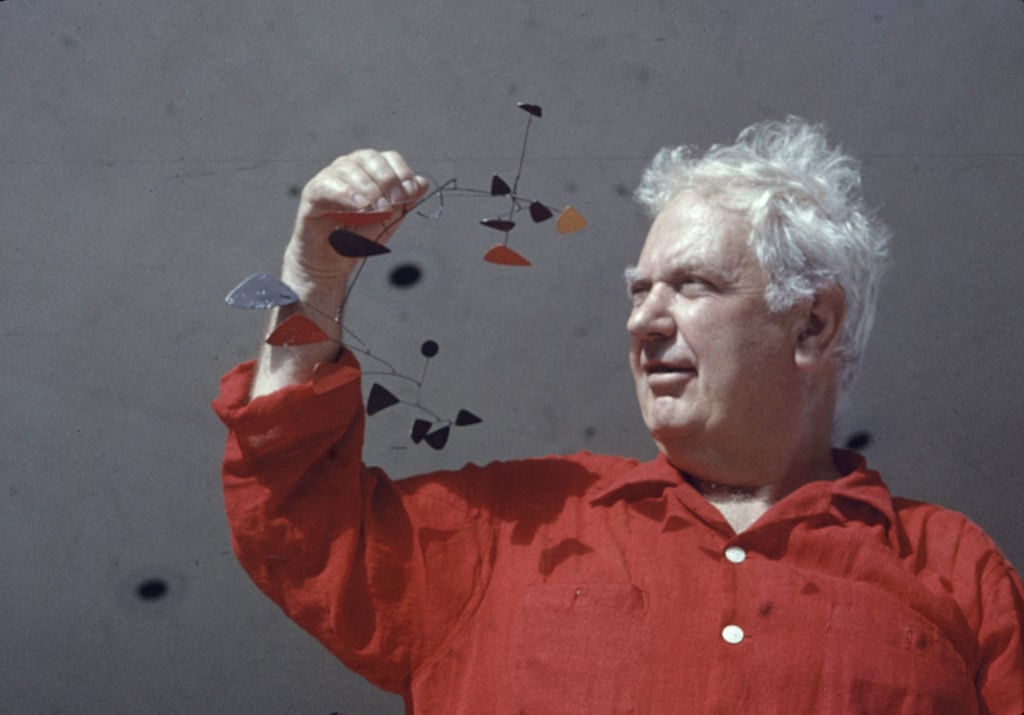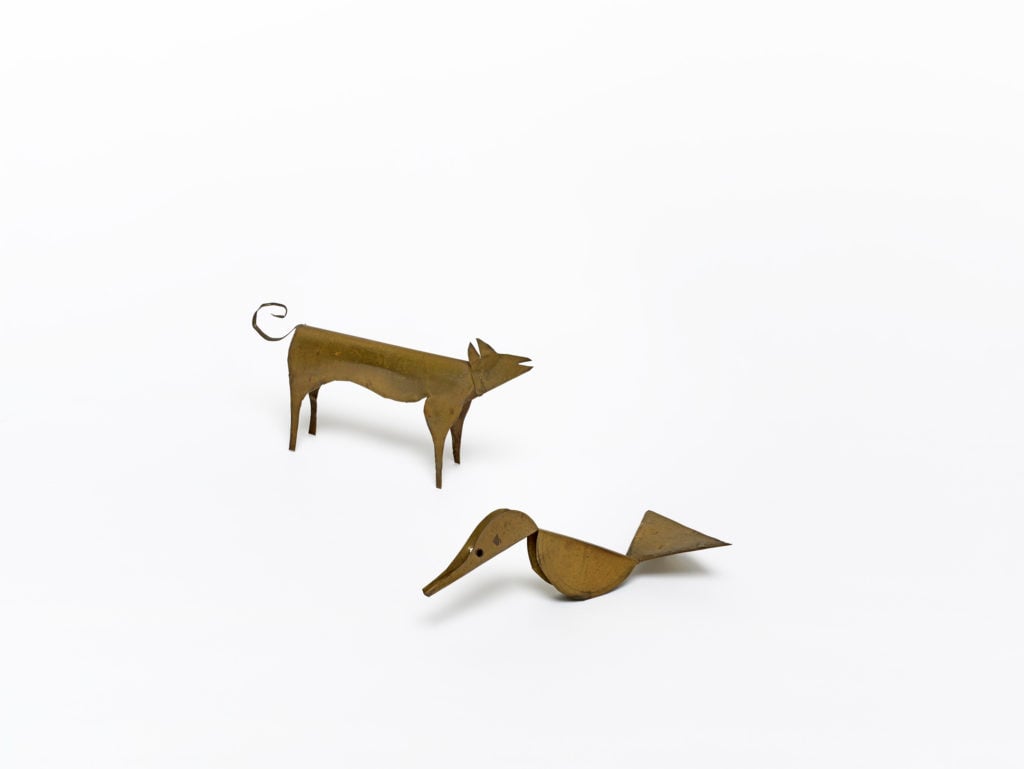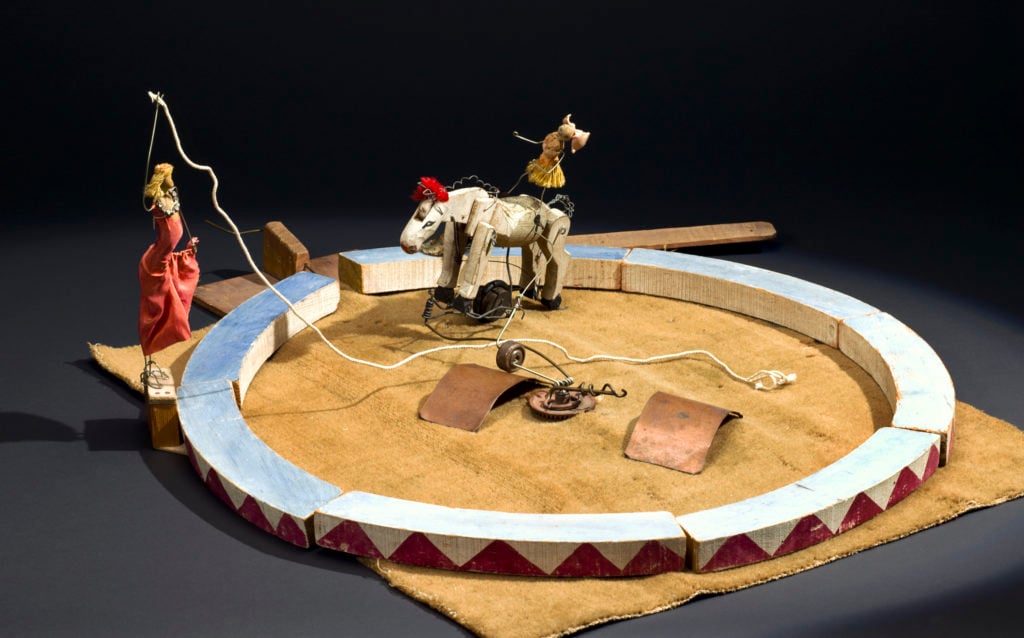Art World
The First-Ever Calder Biography Reveals the Beloved Sculptor’s Radical Side
There is much more to the inventor of the mobile than meets the eye.

There is much more to the inventor of the mobile than meets the eye.

Javier Pes

“I was framed,” Alexander Calder wrote in middle age as he looked back on his childhood and his failed attempt to escape sculpture, the family profession. This is how Jed Perl begins his biography of Calder, which—surprisingly, given his towering stature—is the first ever written on the US artist.
Calder: the Conquest of Time traces how the artist (1898–1976) made mobiles, stabiles, and a mechanical circus cutting-edge Modern art. Even as a toddler, Calder marched to his own tune, Perl notes. Heading to Paris in the 1920s, he had decided he could no longer fight fate—and hit his stride in the most competitive of arenas.
Perl’s more than 600-page volume from Yale University Press debuted in the US on Monday, fêted with a celebration at New York’s Whitney Museum of American Art, which is home to Calder’s Circus (1926–31). The book focuses on the first 42 years of the artist’s life, ending just before his major survey at New York’s Museum of Modern Art in 1943.
Perl, the longtime art critic for The New Republic, was commissioned by the Calder Foundation to write the book a decade ago. He was handpicked by its president, the artist’s grandson, Sandy Rower. Perl tells artnet News that volume two, Calder: the Conquest of Space, is already drafted and due to be published in 2019. At the London launch of the first book earlier this month, Rower joked that he wanted four more.

Alexander Calder’s Dog (1909) and Duck (1909) © 2017 Calder Foundation, New York / Artists Rights Society (ARS), New York. Photo by Tom Powel Imaging
From a young age, Calder showed a precocious talent for art. The book includes images of metal sculptures of a dog and duck he created as a boy in 1909.
But Calder tried hard to dodge heredity (his father and grandfather were successful sculptors and his mother was also a talented artist) by studying engineering at Stevens Institute of Technology in New Jersey. “He was trying not to be framed,” Perl tells artnet News.
Among the surprises buried in the book is the spell he spent in a Brooklyn factory as a time-and-motion man supervising the workers, an unhappy spell in “scientific” management. But Calder soon reverted to his bohemian roots and, with his parents’ support, headed to Greenwich Village to become a painter.
His familiarity with materials, physics, and energy would soon resurface. “Flash forward a decade and the Stevens experience becomes so important,” Perl says. “He was a good mathematician and scientist. The mobiles seem so effortless, but how they balance is not simple.”
Perl also debunks the popular image of “Calder the clown.” The artist was highly intelligent and a “profoundly liberal spirit,” he says. “Calder was questioning the values of an advanced industrial society back in the 1920s and ’30s.”

Equestrian act from Cirque Calder (1926–31) ©2017 Calder Foundation, New York / Artists Rights Society (ARS), New York
He was also a part of the international avant-garde—never simply “an American in Paris”—during the tumultuous years between the World Wars. It was no coincidence that Calder created Mercury Fountain in 1937 for the Spanish Republican Government’s pavilion at the highly politicized International Exhibition even though he was an American.
It was as admired as Picasso’s Guernica. But neither Calder nor Picasso’s work was to the taste of hard-line Communists, who preferred their propaganda with a capital “P” and social realist in style. Being an abstract artist “was a political act,” Perl says. When Calder, his wife, and young family returned to the US, Perl says they were the “go-to people” for European émigrés escaping the Nazis. The Romanian-Jewish refugee who went on to become the celebrated cartoonist of the New Yorker, Saul Steinberg, was among the many they befriended.
Jed Perl, Calder: the Conquest of Time, The Early Years: 1898-1940. Yale University Press.